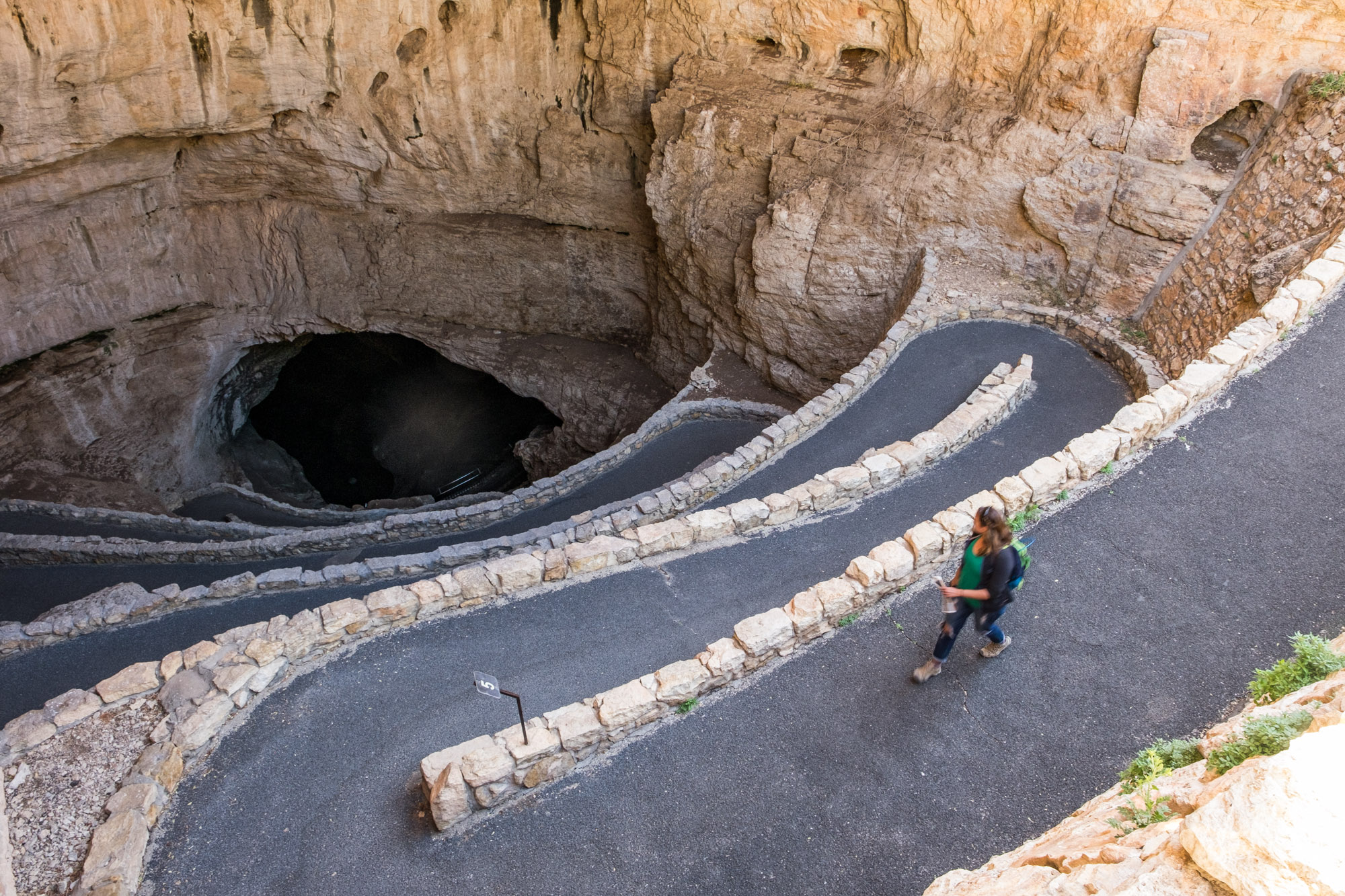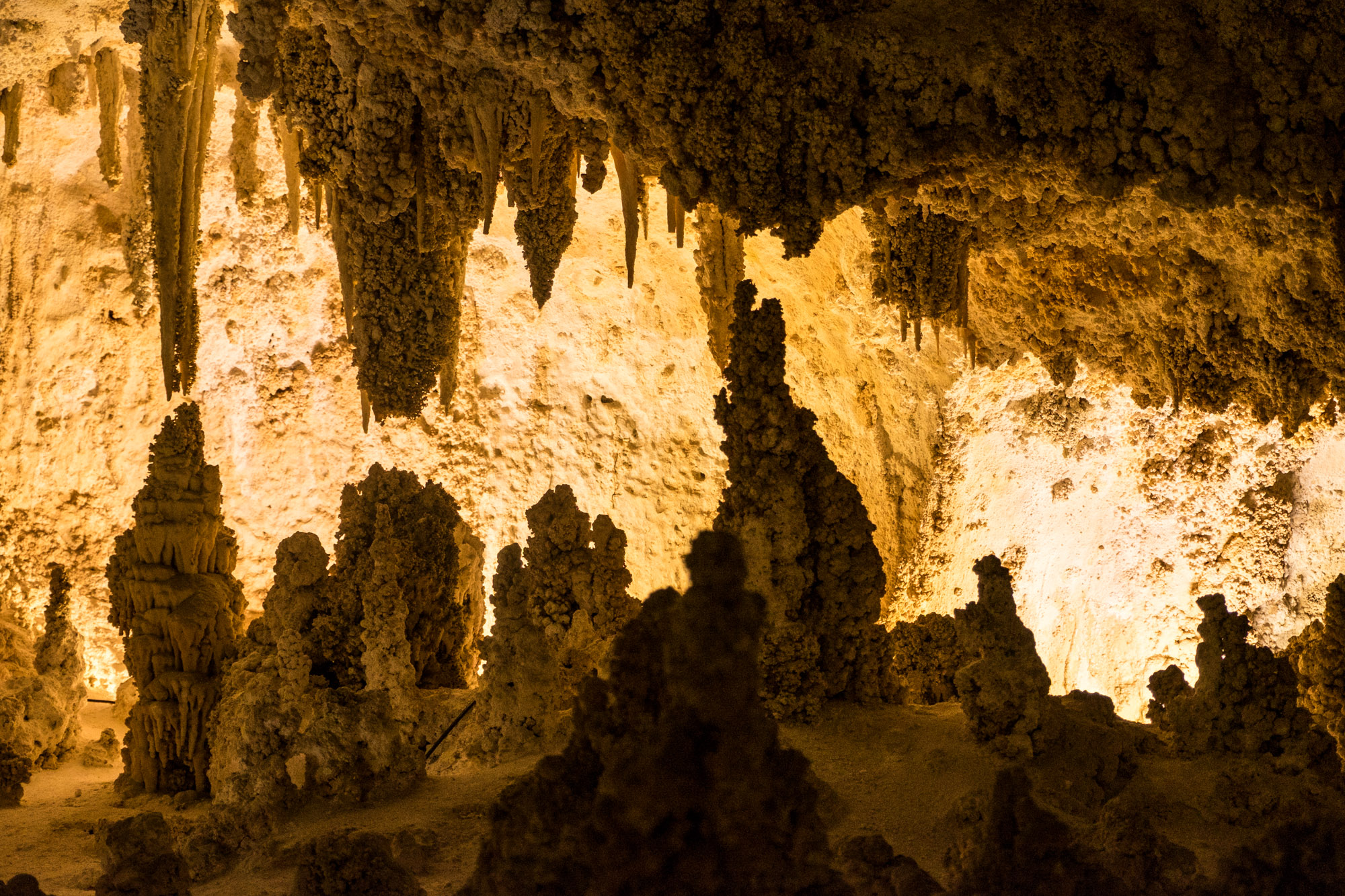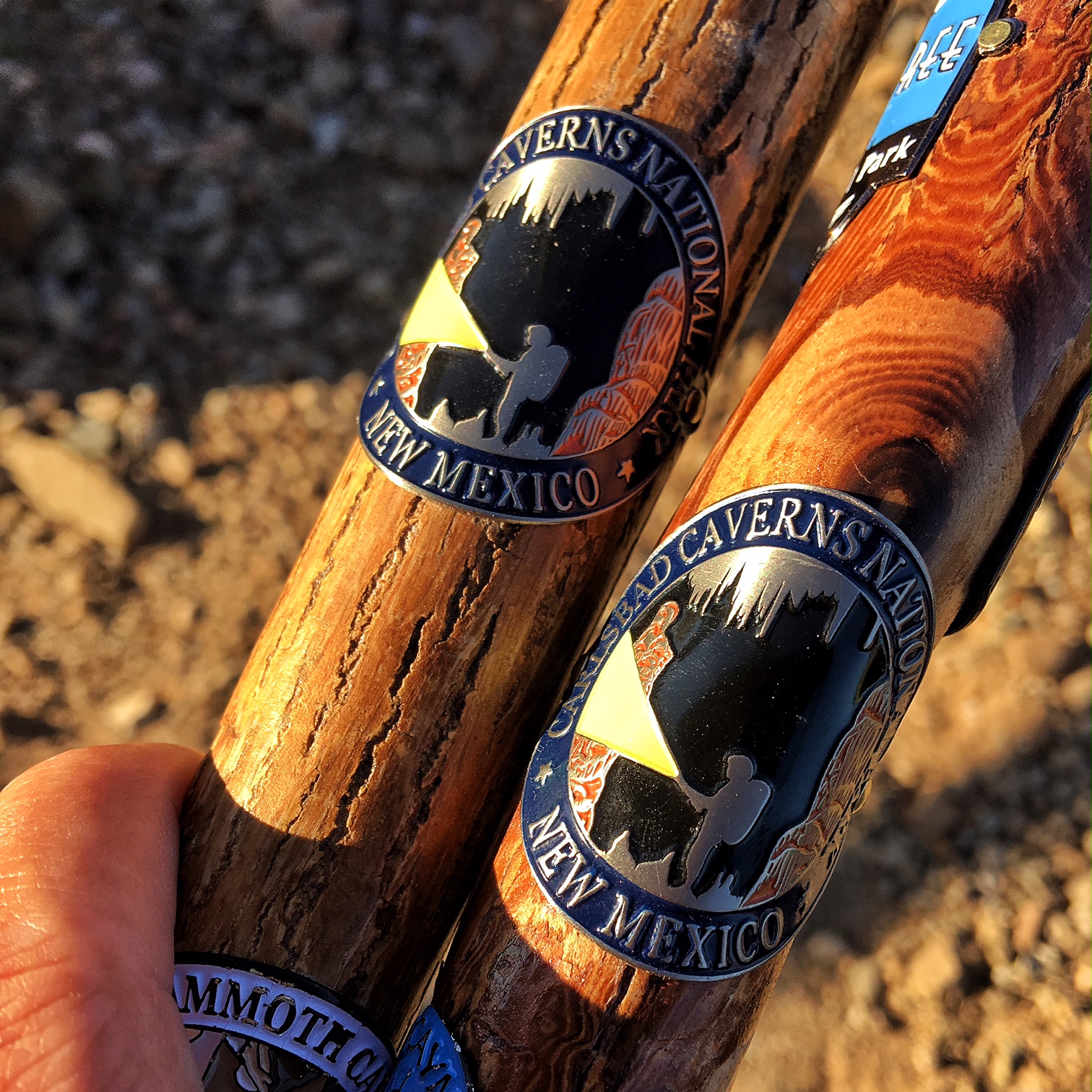Carlsbad Caverns National Park, New Mexico, USA | Park 13/59
“The Grand Canyon with a roof over it.”
“Art takes nature as its model. ”
Art by Earth: Carlsbad Caverns National Park
As our adventures march on this year, they are, as a collection, becoming more and more surreal. One day we're standing on the rooftop of Texas, and the very next we are standing inside of our home planet, 750 feet underground beneath the Earth’s surface in New Mexico.
Carlsbad Caverns National Park can most adequately be described as living artwork. The stalactites hang from the ceiling like delicate chandeliers, the stalagmites rise up from the ground like a forest of trees, and holding it all together is a limestone container—it’s a little like being inside of a geological cantaloupe.
As we wandered the caverns, I got to thinking about an incredible series of artwork created by NASA titled "Earth as Art." It is a collection of images captured by Earth-observing satellites that have provided invaluable information for decades about Earth and how it is changing from the vantage point of space. These photographs show amazingly brilliant, colorful, intricately designed landscapes measured outside of the visible range of light, so you can see more than what is visible to the naked eye. You can feel their movement; they look like beautiful abstract paintings. The chambers of Carlsbad Caverns are like that.
This experience was quite different than our first cave visit this year (Kentucky’s Mammoth Cave in February.) Mammoth feels much more primitive whereas Carlsbad feels well-maintained and controlled. Mammoth has the vastness of the Rocky Mountains; Carlsbad has the opulence of Oregon’s Crater Lake. To compare the two caves would do a disservice to them both. They're so different. In fact, when we walked into Carlsbad, the dissimilarities of the two caves was what first struck us both. Then, the massive size of the chamber beckoned us down a hypnotizing corridor into Earth...
The 1¼ mile Natural Entrance trail descends down 750 feet leading into what feels like a great showroom—"welcome to the museum of wonder!" it shouts. While there are definite standouts (the 200,000-ton fallen boulder called Iceberg Rock comes to mind,) it is our opinion that this room is less about one main site and more about grand first impressions and a perspective of scale. This is the jaw-dropping, “whoa...”portion of the hike.
Where the steep path levels out is where one trail ends and another begins... enter the unmistakable Big Room, the largest single chamber in North America and the undisputed star of this park. The variety and quantity of sculptures of tubes, spires, ribbons, drapes, curtains, stalagmites, stalactites, totem poles, soda straws, and other fantastic sounding organic shapes inside the 8-acre room forms a grand gallery of art. If you look long enough, your visual understanding of it evolves. A visit is like attending an unveiling of a master work by the greatest artist on Earth—Nature.
Quotable Images
Fact Box
46,766 acres | UNESCO World Heritage Site | 30 miles of mapped caves | 119 known caves
Official name: Carlsbad Caverns National Park
Established: May 14, 1930
Location: Southeast New Mexico, in the Guadalupe Mountains range
How the park got its name: Carlsbad Caverns National Park was named after the town it resides in. The name ‘Carlsbad’ was adopted in America (Carlsbad in San Diego is another to coin the name), during the late 19th century to mirror the elite European spa, Karlsbad in what was then Bohemia (now the Czech Republic.)
Iconic site in the park: When you think of caves, you probably think of bats… and there is no greater place to see bats in flight than at Carlsbad Caverns, where every year from May through October, you can watch hundreds of thousands of Brazilian Free-Tailed bats fly from the Natural Cave Entrance into the twilight sky during what is called the Bat Flight program. One great reason to go, and a great reason for us to go back!
Accessible adventure: Explore the cave system with a ranger on one of the guided adventures and see areas that are otherwise not accessible, including King's Palace, the Left Hand Tunnel, and the Spider Cave. In some you will crawl, some you will carry a lantern, some you will climb down a ladder into the darkness – in all, you’ll have unusual underground fun. Group-led adventures are a great way to learn more than you ever could on a self-guided tour. Ranger guides are a wealth of knowledge and are happy when people show active interest in the parks—worthy of tapping into by asking great questions.
If caving isn’t your thing, the nearby above-ground Rattlesnake Springs Historic District picnic area provides a place to kick back and take in the incredible desert landscape of the Guadalupe Mountains and remnants of the ancient barrier reef that exists there.
Big adventure: The self-guided Natural Entrance trail descends 750-feet down a paved pathway on a 1¼ mile trail that was blazed before you by early explorers of the Caverns (sans cement of course.) This first section gives you a real sense of what it feels like to be underground.
Continuing onto the second portion of the trail and you will find yourself in the “Big Room,” a flat 1¼ mile walking path that brings you face-to-face with ornately carved drapes, stalactites, stalagmites, spires, and other limestone formations.
Know before you go: Elevator access from the visitor center to the famed Big Room has been out of commission since November of 2015 and a repair date is still being determined. At the time of writing this, there is only one way to get to this room located 750 feet beneath the Natural Entrance and that is on foot. Big adventure indeed, the climb down is steep and the climb back to the top is strenuous with no alternative route.
Did you know?
The Carlsbad Caverns Park entrance is located just 25 miles from Guadalupe Mountains National Park across the Texas state line. The Guadalupe Mountain range itself is home to both parks.
Carlsbad Caverns has 30 miles of mapped caves. Mammoth Cave National Park in Kentucky is home to the largest known cave system on Earth, with more than 405 miles.
Unlike many other caves, tripod photography is welcome at Carlsbad Caverns.
It’s cool underground! Seriously, temperatures in the caves of North America consistently hover around 55 degrees.
The Big Room is the largest cave chamber in North America by volume, with the capability to swallow six football fields.
“The Bottomless Pit” is one of the famed stops in the Big Room. It is a drop falling only 140 feet—but at the time of discovery, it was thought to be "bottomless." (Note: wise men shall not throw debris into the pit to test its depth. Ranger's have to repel down annually to clean out the bottom.)
Carlsbad Caverns has two entries in the National Registrar of Historic Places—one above ground (Rattlesnake Springs Historic District) and one below (Cavern Historic District).
Explorer great Amelia Earhart visited the caverns in 1928.
Bats!
Bats weigh the equivalent to about three nickels.
There are 17 species found at Carlsbad Caverns.
Although half-a-million bats live inside Carlsbad Caverns, you will rarely see one along the main trails.
White Nose Syndrome is a fungus that, according to the National Park Service, has killed more than 7 million bats in the United States – a number that is expected to grow. How this effects visitors: If you’ve been inside any cave within the passed 7 years you will need to have your shoes and other equipment (tripod legs, backpack bottom) sanitized prior to entering this and other caves in the U.S. National Parks.
UNESCO Scientific Statement of Significance
From the United Nations Educational, Scientific, and Cultural Organization
The more than 100 limestone caves within Carlsbad Caverns National Park are outstanding and notable world-wide because of their size, mode of origin, and the abundance, diversity and beauty of the speleothems (decorative rock formations) within. On-going geologic processes continue to form rare and unique speleothems, particularly in Lechuguilla Cave. Carlsbad Caverns and Lechuguilla Cave are well known for their great natural beauty, exceptional geologic features, and unique reef and rock formations. The Permian-aged Capitan Reef complex (in which Carlsbad Caverns, Lechuguilla and other caves formed) is one of the best preserved and most accessible complexes available for scientific study in the world.
Criterion (vii): The park’s primary caves, Carlsbad and Lechuguilla, are well known for the abundance, diversity, and beauty of their decorative rock formations. Lechuguilla Cave exhibits rare and unique speleothems, including a great abundance of large calcite and gypsum formations, including the largest accumulation of gypsum “chandeliers,” some of which extend more than six meters (18 feet) in length.
Criterion (viii): Carlsbad Caverns National Park is one of the few places in the world where on-going geologic processes are most apparent and rare speleothems continue to form, enabling scientists to study geological processes in a virtually undisturbed environment. These speleothems include helictites forming underwater, calcite and gypsum speleothems, and an astonishing collection of “biothems,” cave formations assisted in their formation by bacteria. Researchers can study both the Capitan reef’s inside through cave passages that penetrate in and through it as well as eroded canyon-exposed cross sections outside.



























































